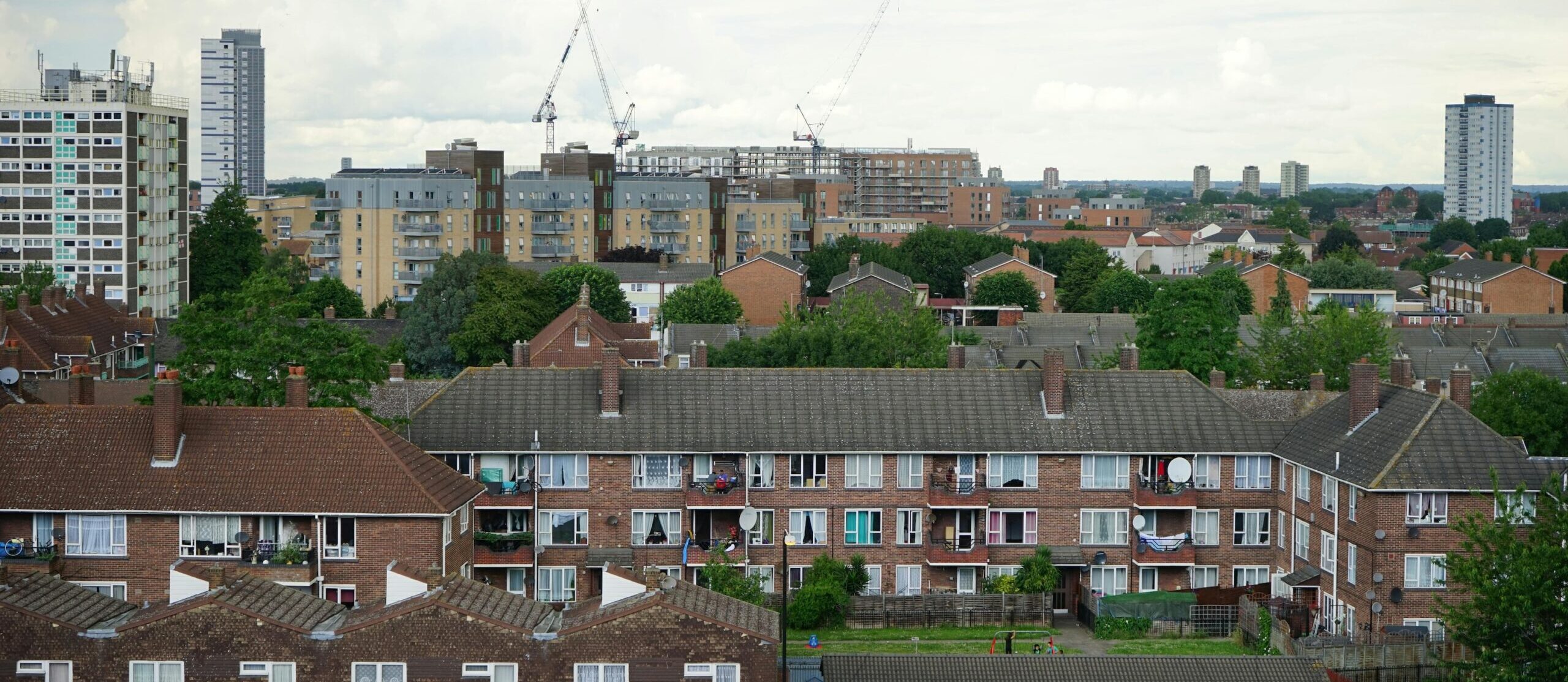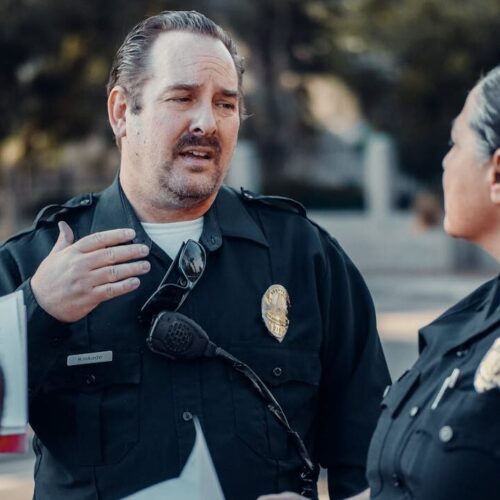
Building Thriving Communities: Focusing on Housing Solutions That Work
It’s hard to argue that homelessness is anything other than a national crisis. Today, we have the highest number of people experiencing unsheltered homelessness since reporting began in 2007. Overall homelessness increased by 12 percent between 2022 and 2023 alone. The challenge can seem daunting, if not impossible to overcome. And yet, in every crisis, there is an opportunity. An opportunity to focus needed public attention on the problem and to direct significant and sustained focus and resources toward implementing the solutions we know work.
When I visited Houston last December, everyone was talking about Mayor John Whitmire’s vow to end unsheltered homelessness in his city, a policy he described as “strict and compassionate.” As with any hot button political topic, the people I spoke with had a wide range of views about how such a goal could and should be accomplished. But one thing everyone could agree on was that focus on the issue was desperately needed.
In this sense, Houston resembles nearly every American city one might visit. The precipitous rise in homelessness has strained response systems and created significant political pressure for local and state leaders to address the issue.
The causes of our homelessness crisis are numerous and complex, but they are also painfully familiar to our nation’s local government leaders. Localities across the country have been burdened by an ongoing shortage of affordable housing, combined with barriers that often prevent people with criminal records or behavioral health needs from accessing a safe and stable home, much less the support they need to maintain it.
The question that remains mired in controversy and uncertainty is not why we have found ourselves in this predicament, but how to get ourselves out of it. This question of how to address unsheltered homelessness received significant national attention in June 2024 when the United States Supreme Court decided on a case called City of Grants Pass, Oregon v. Johnson. In that case, three city residents filed suit on behalf of themselves and others experiencing homelessness. They argued that a local ordinance, which regulated camping on public property, was unconstitutional in that it punished them for life-sustaining activities they had no alternative but to perform in public places. The Court held that the statute did not violate the Eighth Amendment’s ban on cruel and unusual punishments.
An Opportunity to Think Beyond Encampment Clearings
Grants Pass was big news, and deservedly so. The Supreme Court ruled that cities can, consistent with the United States Constitution, punish people for camping in their parks and other public places. That is true, the Court said, even if those people have nowhere else to go.
But for elected officials across the country who are developing plans to respond to homelessness in their localities, the case opens as many questions as it answers. As one Justice put it at oral argument, homelessness is a “super-hard policy problem.” But all the Grants Pass decision can tell us is the minimum acceptable practice that will keep a city compliant with the Eighth Amendment. What the case did not (and could not) answer is what local policies and practices should look like in the wake of the decision.
The practical effect, then, has been to put a potential tool in policymakers’ toolboxes without a lot of guidance about how to use it: if cities want to, they can pass and enforce ordinances like the one in Grants Pass, Oregon. As a result, some cities are now looking to “clear” homeless encampments. For cities that adopt such a strategy, there are encampment response best practices and resources such as the United States Interagency Council on Homelessness’s guidance that they would be wise to consider. These include:
- Formalizing collaborations between law enforcement and service providers, attending the same meetings and conducting encampment outreach alongside each other
- Conducting housing and needs assessments to determine what each individual will require in order to acquire and keep permanent housing
- Giving people access to identification and service supports, so they’re able to get into housing and get the help they need
- Creating “bridge housing” as needed, when people cannot be moved into permanent housing right away
- Whenever possible, moving people directly into permanent housing by working with local homeless system and housing providers, and connecting them to case management to stabilize them
- Throughout the process, communicating early and often with verbal and written notices about encampment cleanups or closures, taking care to protect and store personal possessions
These measures and others like them will go a long way to ensuring that we maintain residents’ humanity even when removing encampments from public spaces.
When we look beyond simply employing encampment clearings, however, there is great opportunity for thoughtful policymakers to ask questions that have a much broader scope than the one the Supreme Court considered: What does a successful, effective, and humane plan to end unsheltered homelessness look like? How do we set people up for success so that they not only get access to permanent housing, but they have the means by which to keep it? And what will it take to make sure we don’t end up here again?
Resourcing and Scaling Community Solutions
Ending unsheltered homelessness may sound like an ambitious goal, but, as I’ve described in my prior articles on housing, there are lots of best practices available to choose from when addressing homelessness nationally and at local levels. There are also success stories, like the continued drop in homelessness among veterans, that we can learn from. Some localities may despair that they’ve tried some of these strategies already and they haven’t worked (or haven’t worked sufficiently well to address the full scope of the problem). But my travels around the country have convinced me that what we have not yet tried anywhere is bringing the full complement of strategies that we know work to scale, resourcing them all appropriately, and sustaining them over time.
Here at the CSG Justice Center, we have grown and strengthened our housing team—bringing people with significant experience and expertise onto our staff and advisory board—so that we are ready to support our state and local partners in addressing this critical challenge. With these experts at the helm, we are bringing justice, health, housing and homelessness services partners together in collaborative planning efforts to develop concrete strategies to identify people’s housing needs, make connections with existing housing based on those needs, and start the work of funding and building more affordable housing with appropriate support services. We are also clarifying best practices for collaborations between police, homelessness services providers, and communities. And we are developing practical tools that law enforcement can use to connect people to the resources and support services they need to get and stay off the street.
In times of crisis, it can be tempting to want to reject everything we’re currently trying and seek out entirely novel solutions. While innovation is always valuable and needed, intractable problems are rarely solved without relentless focus on implementing and sustaining evidence-based strategies.
As Robert Frost famously wrote, “the best way out is always through.” I believe we have great opportunity to build and rebuild thriving communities that are safe and prioritize individuals’ humanity, but only if we are willing to commit to evidence-based strategies fully and for the long term. No one tool or approach is powerful enough to end this crisis by itself. Deploying all of the strategies that have proved successful and doing so consistently and with fidelity – that is the path that will take us through.
This web article is part of a series on housing in America. To read part one, visit A Place to Call Home: A Key Ingredient to Reentry Success. Part two can be found at More than Just Heroes: Two Cities Offer a Pathway to Reducing Homelessness in America.
For more information and resources on housing best practices, visit the CSG Justice Center’s Housing Topics page.
Hero image photo credit: Photo by Mike Birdy via Pexels
Feature image photo credit: Photo by Kindel Media via Pexels
About the author

The sharp rise in school shootings over the past 25 years has led school officials across the U.S.…
Read MoreA three-digit crisis line, 988, launched two years ago to supplement—not necessarily replace—911. Calling 988 simplifies access to…
Read More Taking the HEAT Out of Campus Crises: A Proactive Approach to College Safety
Taking the HEAT Out of Campus Crises: A Proactive Approach to College Safety
The sharp rise in school shootings over the past 25 years has led school officials across the U.S. to take a closer look at ways to keep students safe. For Chaffey College in Rancho Cucamonga, California, a tragic incident at a nearby university hit close to home and spurred campus leaders to revisit their own school’s threat assessments and crisis responses.
Read More From 911 to 988: Salt Lake City’s Innovative Dispatch Diversion Program Gives More Crisis Options
From 911 to 988: Salt Lake City’s Innovative Dispatch Diversion Program Gives More Crisis Options
A three-digit crisis line, 988, launched two years ago to supplement—not necessarily replace—911. Calling 988 simplifies access to services when people are seeking help for themselves or loved ones with suicidal thoughts, behavioral health concerns, or substance use-related crises.
Read More Matching Care to Need: 5 Facts on How to Improve Behavioral Health Crisis Response
Matching Care to Need: 5 Facts on How to Improve Behavioral Health Crisis Response
It would hardly be controversial to expect an ambulance to arrive if someone called 911 for a physical health emergency. And yet, for years, the default responders for a behavioral health emergency have been law enforcement officers, not behavioral health professionals.
Read More











